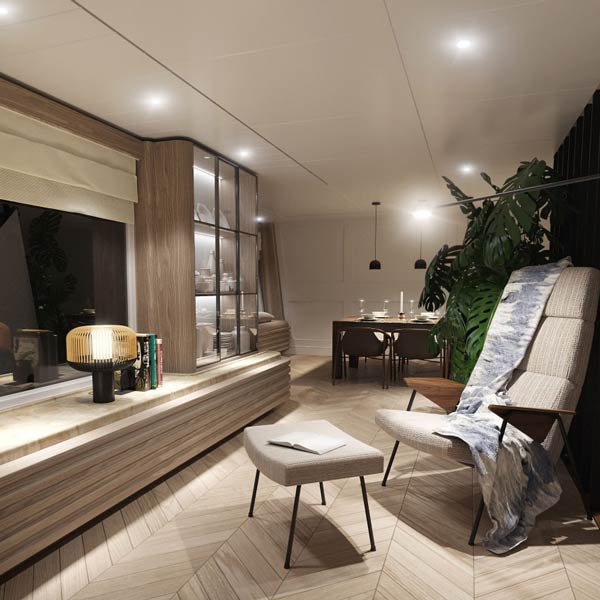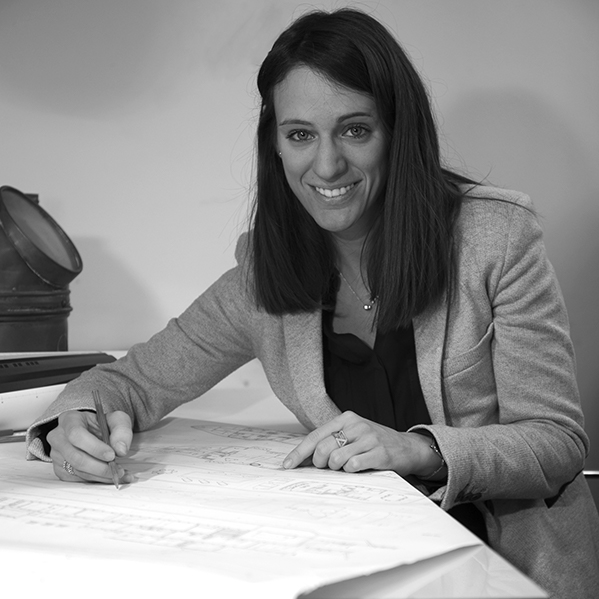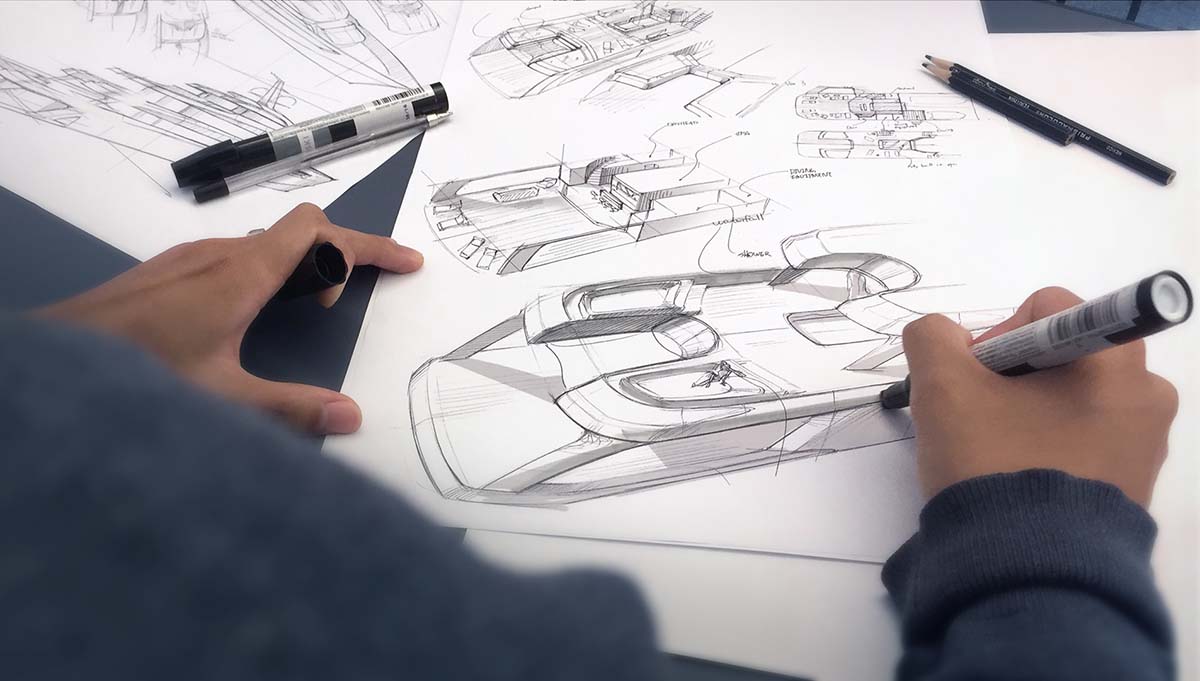

Clever by design
As AI becomes commonplace in all areas of our lives, some enterprising superyacht companies are looking at how it can improve the design spiral and create efficiencies in the construction phase.
Ever since the early days of sci-fi books and films, the idea of an artificial intelligence that learns from its surroundings and improves upon its mistakes has both fascinated and – by equal measure, for some – terrified us humans. Here’s the thing, though – AI is not sci-fi anymore, and hasn’t been for a long time. And now some enterprising yacht designers are drawing on AI and machine learning to improve the design process, and in doing so confer several benefits not only to clients but also to their own design teams.
Naval architects have long drawn on technology and computing power to test and refine their designs, and computer modelling has meant that studios have been able to develop their ideas with less reliance on making scale models for tank testing – an expensive and time-consuming process.
When Ben Ainslie’s BAR America’s Cup team (which spawned BAR Technologies in 2016) announced its partnership with Jaguar Land Rover in 2015, bringing the car giant in as innovation partner, things took a step up – Jaguar Land Rover’s supercomputing power added considerable design resource. More than that, though, it brought in a new level of machine learning that was applied not just to design elements – for example, for the mighty rigid wing sail – but also for analysis of the performance data from runs on the water to see where equipment and crew manoeuvre improvements could be made alike.
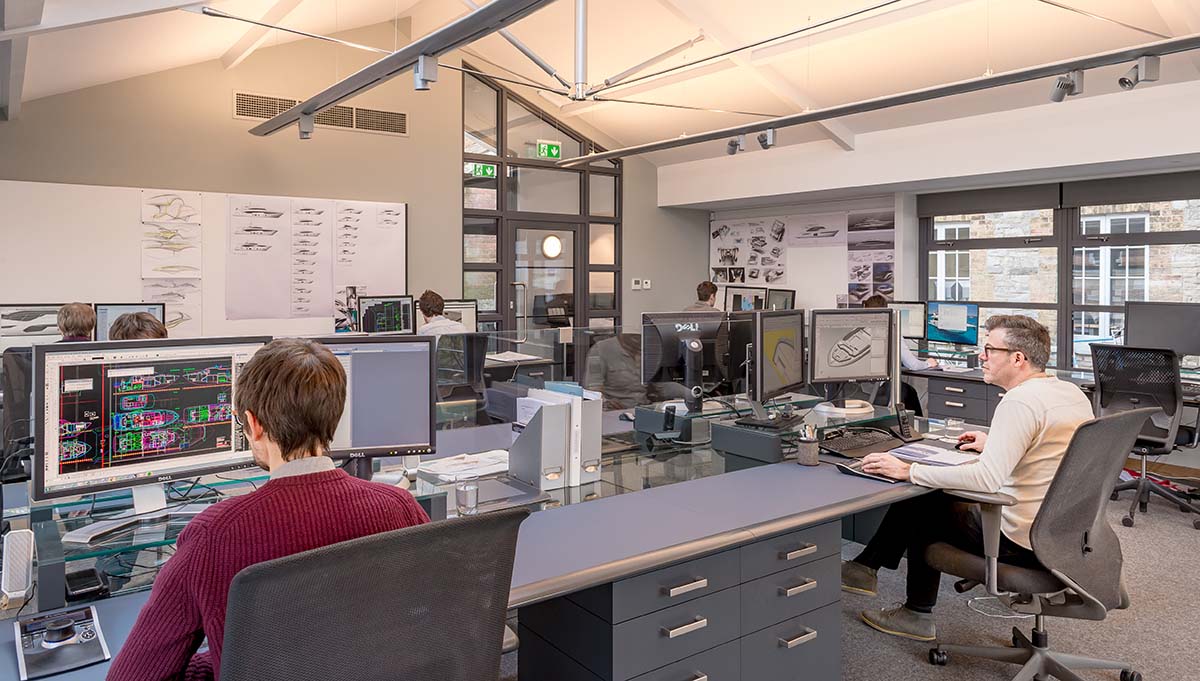
Studio of Olesinski

Studio of Olesinski
At around the same time, another marine company was also taking its first steps into seeing what AI and machine learning could bring to the party. The company was Olesinski, a naval architecture studio based on the Isle of Wight, UK. “We’ve used bits of tech that sort of fall under the AI umbrella for a long time now,” begins Bill Edwards, Olesinski’s head of research and development, “but only in terms of augmenting certain processes and optimising the different parameters of, say, resistance or top speed or fuel burn.”
As the team looked to develop the code to enhance the machine learning aspects they started to work with research fellows at the University of Southampton and, subsequently, with the Alan Turing Institute. “This all led us down a route where we started supporting various Masters-level projects at the university, and one of the researchers was really interested in the general arrangements of yachts – the interior layouts, in effect,” says Edwards.
It didn’t take long for the Olesinski and student teams to consider the possibilities – what if they were able to develop machine learning and AI to create optimised interior layouts? Over the following months and years, that’s exactly what they developed. “The whole point of it is not to produce a fait accompli,” says Edwards, “but rather to be able to say how about this or this, just like a regular designer would do – a springboard for designers rather than them wasting time going down the dead ends.”

Bill Edwards & Justin Olesinski

Bill Edwards & Justin Olesinski
For studio principal Justin Olesinski, the evolving technology means the potential for a less frustrating design spiral. “When I used to do layouts, it was my favourite thing to do – it was like a game of Tetris,” he offers. “But with a V-hull for example, the lower you go the narrower the beam gets and that means less floor area, so you have to lift it up but the boat gets too tall – you go round the spirals, and you’d start with a 2D AutoCAD file, then move to 3D, spend weeks on it then find it doesn’t work. What’s lovely about what we’re working on at the moment is that is only shows you things that work, and that saves time.”
The current iteration of the AI software – some eight years in – is now reaching a point where it can come up with a basic layout for a yacht interior that is remarkably close to what a human designer has come up with. What’s more, with decades of design archives to learn from and with ever-advancing technology helping it progress, Olesinski’s solution is starting to offer real-world benefits in the team’s design cycle. It’s a classic example of how superyacht designers are evolving to make not only their own operations more efficient but also the vessels they design more efficient too.
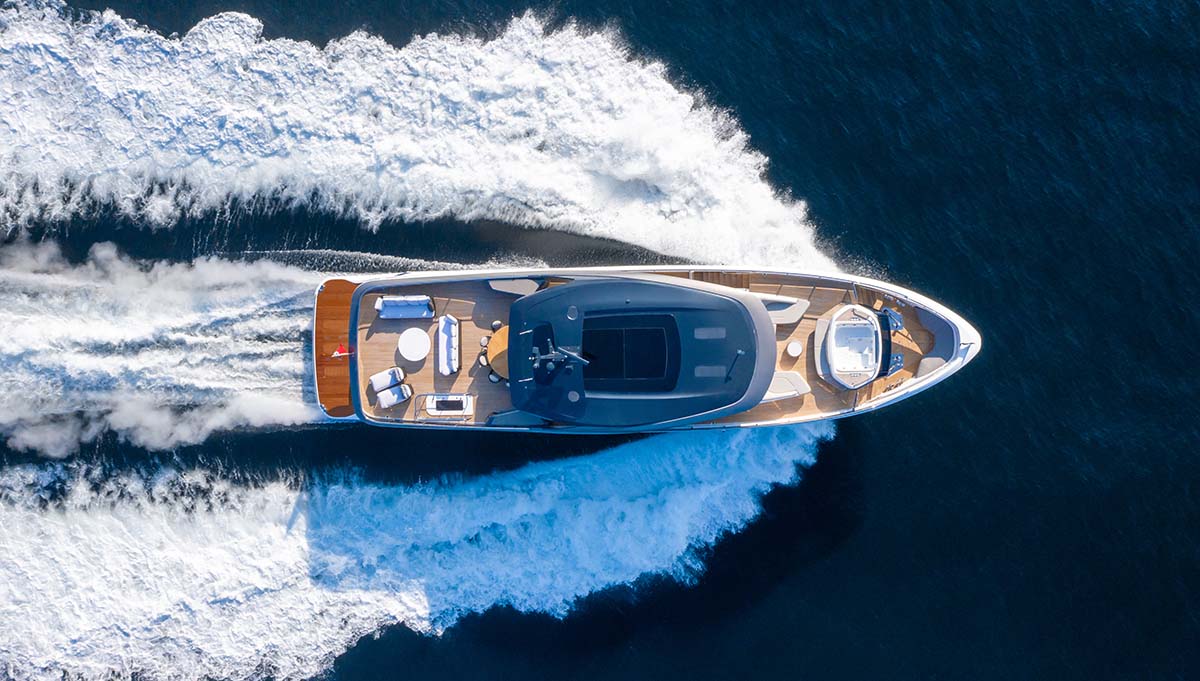

“I think the really big question is why are we doing it when we’ve got a lot of designers that are really good at doing layouts?” Olesinski says. “First, it’s a mathematical problem in a lot of ways, and if someone’s got X amount of time this means they don’t spend their time going down blind alleys, but rather it gives them more time to spend on styling – the more enjoyable stuff, the more emotional side of things. Second,” he continues, “it can be used to bring the length of the whole project down by shortening the design process from perhaps six to eight months down to two or three months, which can be significant in a superyacht project of three or four years total. And then,” he says, “you can potentially use this in other areas, perhaps in the construction phase by making the yacht easier to build, which might also mean getting the yacht in two years instead of three or four years.”
It’s a tantalising thought that AI might not only save time in design but also create material efficiencies in the construction process, because that would not only make it more convenient for owner and builder alike, it could make a difference in minimising material waste and maximising efficiencies in the hull forms and overall designs themselves – and that is the sort of superyacht sci-fi not to fear, but to embrace. And it’s not hard to see how the development of AI in yacht design will be influenced by – and in turn influence – developments in other sectors. After all, AI is no longer only available to giant tech corporations or industrial powerhouses – it’s now in the hands of forward-thinking design studios. The possibilities are endless.

